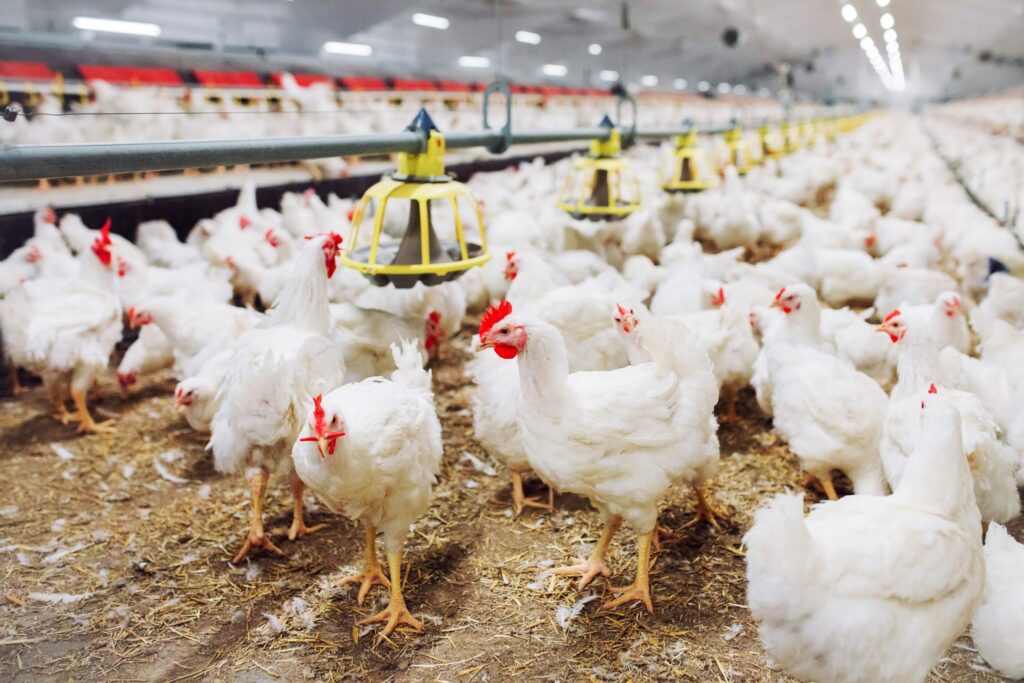Completing Your Poultry Nutrient Management Plan
go.ncsu.edu/readext?1032166
en Español / em Português
El inglés es el idioma de control de esta página. En la medida en que haya algún conflicto entre la traducción al inglés y la traducción, el inglés prevalece.
Al hacer clic en el enlace de traducción se activa un servicio de traducción gratuito para convertir la página al español. Al igual que con cualquier traducción por Internet, la conversión no es sensible al contexto y puede que no traduzca el texto en su significado original. NC State Extension no garantiza la exactitud del texto traducido. Por favor, tenga en cuenta que algunas aplicaciones y/o servicios pueden no funcionar como se espera cuando se traducen.
Português
Inglês é o idioma de controle desta página. Na medida que haja algum conflito entre o texto original em Inglês e a tradução, o Inglês prevalece.
Ao clicar no link de tradução, um serviço gratuito de tradução será ativado para converter a página para o Português. Como em qualquer tradução pela internet, a conversão não é sensivel ao contexto e pode não ocorrer a tradução para o significado orginal. O serviço de Extensão da Carolina do Norte (NC State Extension) não garante a exatidão do texto traduzido. Por favor, observe que algumas funções ou serviços podem não funcionar como esperado após a tradução.
English
English is the controlling language of this page. To the extent there is any conflict between the English text and the translation, English controls.
Clicking on the translation link activates a free translation service to convert the page to Spanish. As with any Internet translation, the conversion is not context-sensitive and may not translate the text to its original meaning. NC State Extension does not guarantee the accuracy of the translated text. Please note that some applications and/or services may not function as expected when translated.
Collapse ▲The poultry industry is growing again in North Carolina and producers are needing nutrient management plans completed. These are also commonly referred to as waste plans or litter plans. For producers in need of a plan, here is the information I will need to complete the cover sheet of your plan: name of farm, land owner’s name, mailing address, county, phone number, type of poultry, integrator name, and one-time placement number of birds.
If you are using a third-party applicator to remove your litter, there is a form both the farm owner and the third-party applicator will need to agree upon, sign and date. If you are applying the waste yourself, please bring the maps provided by the county Farm Service Agency office of where you plan to apply the litter. These maps need to show field location, crop acreage, and be labeled to identify crops and spreading rates for each field. Nitrogen requirements will also be needed from the North Carolina Nutrient Management Program, where RYE (Realistic Yield Expectation) data is found online. I will determine the dominant soil type of each field and be able to complete the plan with this information.
Soil samples are currently required every three years from all fields that receive litter and must be processed by an approved lab, but you are welcome to test more often than this. You can have your samples processed in Raleigh at the North Carolina Department of Agriculture and Consumer Services (NCDA&CS) agronomic division laboratory. These records must be kept for three years, or if you are participating in a funding program with NRCS (Natural Resources Conservation Service) you must keep your records for five years. There are fees associated with soil testing during peak seasons for the laboratory, so be sure to check the rates before sending your samples.
Waste analyses are required within 60 days before or after a litter application (120-day window) and must also be kept three years, or five years if participating in funding from NRCS. The maximum spread rate and nitrogen balance can be determined by using the PAN (Plant Available Nitrogen) numbers. Both the soil test results and the waste analysis results are now only available online unless you request a hard copy.
The last part of the plan includes the spreading records forms (Dry 1, 2, and 3). These forms can be found at your local Cooperative Extension office, or you can request an electronic copy. There is also an Excel computer spreadsheet version that will do calculations automatically to ensure no calculation errors. You will need the following information to complete these forms: date and amount of litter removed, date and location of spreading, fields and amount spread, as well as the nitrogen balance. Make sure you keep these forms updated on a regular basis and that everyone who applies the litter is filling out the correct forms.
What does your waste plan do for you and your farm? It gives you the necessary information to properly apply litter at agronomic rates on your fields. This way you are sure you are not over applying nutrients and the plants are able to completely use the litter as fertilizer. Making sure your waste plan is complete and accurate is the first step in making sure you are properly spreading litter from your poultry operation. Also, be sure to update your waste plan if you want to make changes to how you apply your litter, what fields are included in the plan, or if you want to change your third-party applicator.
If you need a poultry waste plan completed, you can contact Margaret Ross at Margaret_Ross@ncsu.edu or by phone at 252.670.8254.




